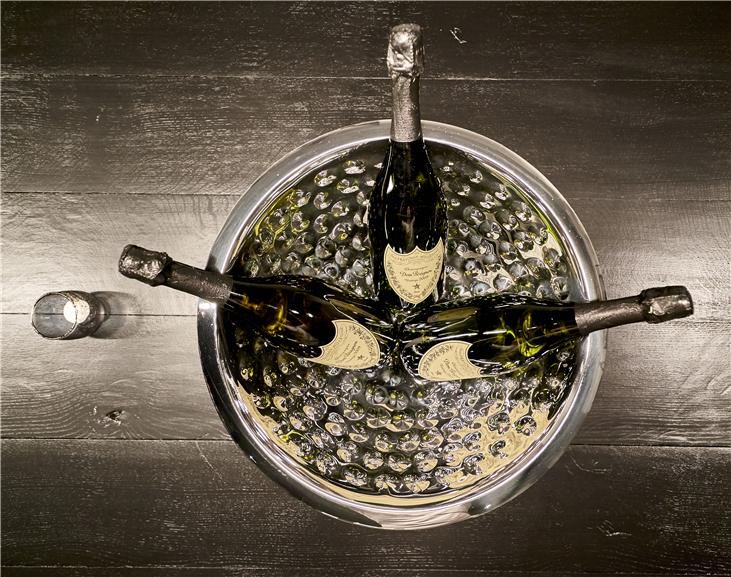Dom Pérignon is the most famous champagne in the world and loved for its exceptional flavours and aromas. The history of this champagne is as much intriguing as its reputation. For example, it is rumoured that during the royal wedding of Princess Diana and Prince Charles 99 bottles of the vintage 1961 - the birth year of the bride - were served to the guests. But what makes Dom Pérignon so unique?
The namesake of Dom Pérignon
Don’t be mistaken: Dom Pérignon is not a champagne house. It’s a brand of vintage champagne introduced by Moët & Chandon in the 1920’s as its top cuvée. The first Dom Pérignon champagne was produced in 1921 and launched in 1936. They named the champagne after Dom Pierre Pérignon, a 17th-century monk. He was not the inventor of champagne but was a pioneer in winemaking techniques.
Dom Pierre Pérignon was born in 1638 in the Champagne region of France, where his family owned a few vineyards. He worked as cellar master at the Benedictine abbey in Hautvillers and thanks to his hard work, the abbey doubled its vineyard size. Dom Pierre Pérignon believed that hard work brought a monk closer to God, which ignited his dream of creating “the best wine in the world.” It is in this former monastery where the champagne Dom Pérignon is made today.
The home of Dom Pérignon
The house of Moët & Chandon is located in the heart of the champagne region and has vineyards in Montagne de Reims, Côte des Blancs, Vallée de la Marne, Sézanne and Aube. Altogether the house owns 1,150 hectares, of which 50% Grand Crus and 25% Premier Crus vineyards.
Dom Pérignon is produced in Hautvillers, which is located in the south of the Montagne de Reims. Its terroir is predominantly a rich chalk soil with limestone, which keeps the vines naturally watered all year round. The moderately steep terrain creates an ideal vineyard in which good drainage and optimum exposure to the sun are combined.
The thrill of Dom Pérignon
Dom Pérignon is always an assemblage of Pinot Noir and Chardonnay grapes, in which they play with contrasts and complementary elements. Each vintage has its own composition: sometimes the blend has perfectly equal proportions, other times up to 60% Chardonnay or 60% Pinot Noir. A Dom Pérignon Rosé is completely Pinot Noir-based and often more expensive than the ‘standard’ Dom Pérignon.
“Our commitment to vintages is absolute. Dom Pérignon is reinvented with every vintage, daring to take risks. That is the cost of revealing the wine’s extra ‘soul’, even if it means not declaring a vintage.” - from the Manifesto of Dom Pérignon
All the grapes used, need to be harvested in the same year. Each vintage has to express the character of the year and the character of Dom Pérignon. Hot and dry harvest seasons produce aromas of spicy and nutty flavours, while wet harvest seasons result in floral bouquets with hints of vanilla, honey and almond.
Dom Pérignon is made only in exceptional vintage years. Per decade they will make no more than six vintages. Everything needs to be perfect and the champagne must be able to age more than 20 years.
The plenitudes of Dom Pérignon
Each vintage of Dom Pérignon has three plenitudes or ‘windows of opportunity’. The first one comes between 7 to 8 years, the second arrives between 12 and 15 years and is indicated with “P2”, for example, “P2 - 2000”. The third window is around 30 years.
“We are strong believers in the virtue of yeast maturation – we think it dramatically contributes to the singularity of Dom Pérignon.” - cellar master Richard Geoffroy
The champagnes don’t develop in a linear way but rather in plateaus creating different windows of expressions. The different releases of one vintage give people the chance have a taste of the different expressions of the same vintage. Make sure you store your Dom Pérignon champagnes in a cool and humid cellar so they can age as intended.
Prestigious but never a Grand Cru
Only certain vineyards in the Champagne region are classified as Grand Cru. In order to qualify a champagne as Grand Cru, it must only be made with grapes from these vineyards. Although Dom Pérignon is made with grapes from Grand Cru vineyards, each blend also includes grapes from the original plot in the Abbey of Hautvillers, which is classified as Premier Cru.
Discover our current collection Dom Pérignon champagnes and have a taste of one of the world’s best champagnes.




